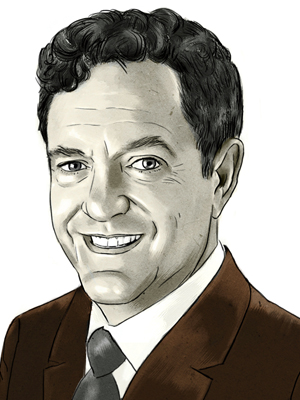
Story Power: Why Businesses Can't Tell Them Right
It is a mystery why businesses don’t follow this eternally appealing plotline
The year’s surprise megahit movie is Gravity, starring Sandra Bullock and George Clooney. Warning: I’m about to spoil the plot. Stop reading if you want to see the movie with fresh eyes.
While orbiting Earth in a space shuttle, Bullock and Clooney survive a collision with debris. Clooney, the veteran astronaut, and Bullock, a medical doctor and space rookie, now must find a way to get back to Earth.
Their plan: Get to a Chinese space capsule and blast home. Things go haywire, and Clooney sacrifices himself so that Bullock has a chance to live. But she is overwhelmed by the challenge of getting back to Earth by herself. She accepts her fate and turns off the oxygen in the space capsule to begin a painless death by hypoxia.
The movie doesn’t end with Bullock’s suicide, of course. It ends rather heroically, which is why Gravity has been such a smash hit with men and women, old and young. It’s an updated version of a classic plotline: The hero’s journey.
John Ford, the great Hollywood film director of the mid-20th century, had a favourite saying. Every good movie Western, Ford said—and he made dozens of them— shared the same story: “The bad guys show up while the hero is still evolving.”
Don’t you love that? It’s the short- est and best summation of what the late scholar Joseph Campbell called the hero’s journey. In fact and fiction, as well as in religion and secular life, the hero’s journey is an eternally appealing story: Abraham Lincoln, Jesus Christ, Luke Skywalker, a near crippled Kirk Gibson hitting a game-winning home run for the Dodgers in the 1988 World Series opening game.
The mystery is why businesses are so reluctant to tell their stories in this way. Most businesses do the opposite. They take good raw material about their customers and turn it into Barbie doll stories, fake and plastic. An example is that old yawner, the customer case study. As told by most corporate marketers, it goes like this: “The customer had a problem. Our company’s complete suite of [snore] and [zzzzzz] solutions was implemented. The customer was happy and went on to greater heights.”
Really, that’s it? No sweat? No arguments? No false starts and false dawns? No harrowing walk through the valley of the shadow of death? Everything just worked, right from the start, as if by immaculate conception? Such is never the truth. Even worse, it’s boring. Stories drive change.
As story expert and executive con- sultant Nancy Duarte told me, “For thousands of years story has been used to transfer insights and morals, keeping entire cultures knit together. And this is preliteracy—thousands of years of preliterate people.”
In our personal lives we think in stories, talk in stories, communicate in stories and even dream in stories. When we’re asked what we did over the weekend, we don’t provide some analytical abstraction—we tell a story. When asked about our dinner out last night or our vacation, we tell a story. And these stories have characters, multiple plots and plenty of drama.
No matter the form, a good story- teller describes a conflict. The main character, the hero, is called upon to make decisions, take action and, ultimately, discover a new truth. “With storytelling, in particular, the thing that we love is watching someone transform,” says Duarte. “The three-part story structure is clear: One, you meet a likable person; two, that person encounters roadblocks; three, that person emerges transformed. Storytelling creates a tension and release that is so important to creating change.”
What does this have to do with business? Well, business is terribly competitive. Who doesn’t wish it were easier? Blame slow growth, the march of cheap technology, internet transparency—which erodes pricing power—or global competition. Stellar strategy and execution once offered protection, but these can be copied. What survives? The best stories.
Rich Karlgaard is the publisher at Forbes
(This story appears in the 29 November, 2013 issue of Forbes India. To visit our Archives, click here.)
















